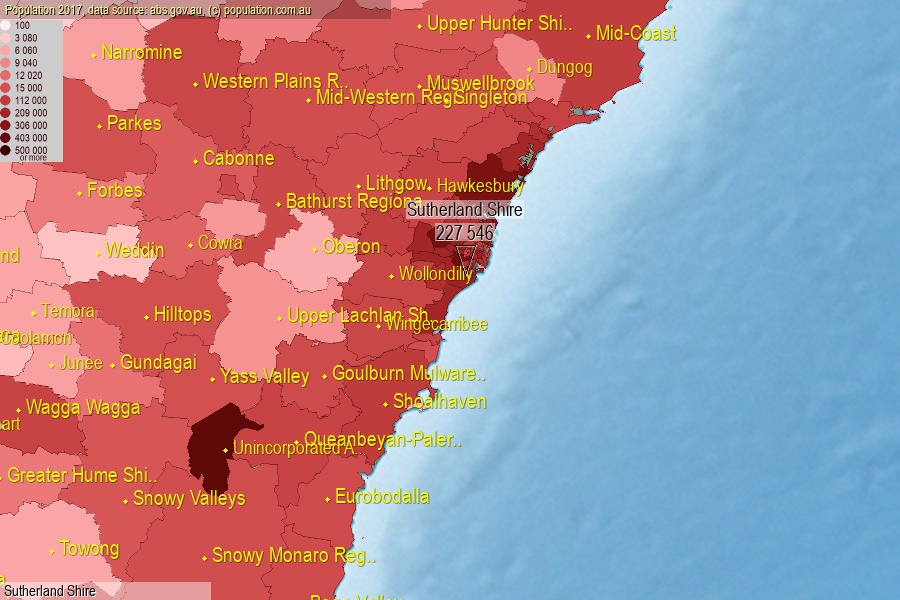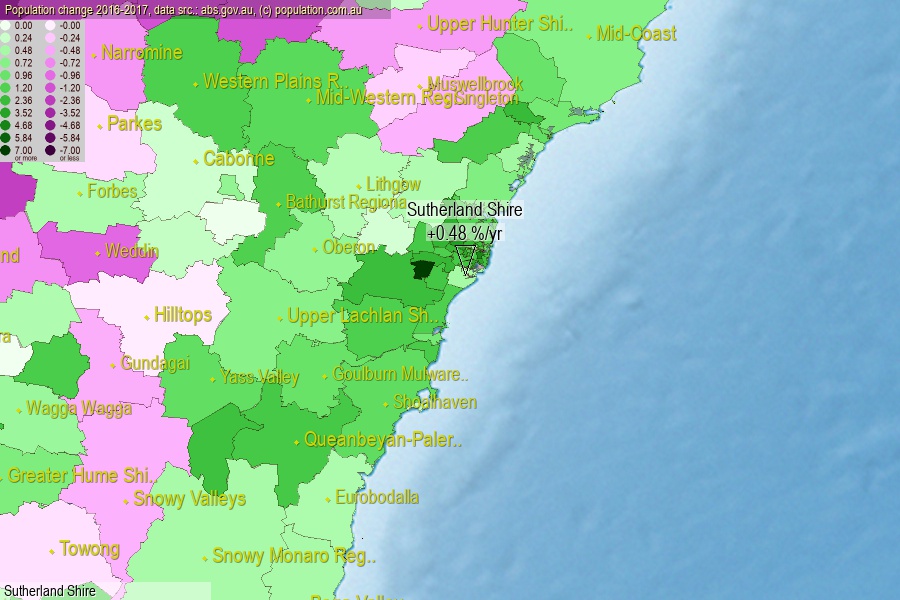 population.com.au
population.com.auLast official estimated population of Sutherland Shire Area (as Local Government Area) was 227 546 people (on 2017-06-30)[2]. This was 0.92% of total Australian population and 2.86% of NSW population. Area of Sutherland Shire is 333.60 km², in this year population density was 682.09 p/km² . If population growth rate would be same as in period 2016-2017 (+0.48%/yr), Sutherland Shire population in 2025 would be 236 415. [0]



Click to enlarge. Sutherland Shire is located in the center of the images.
Population [people], population density [p./km²] and population change [%/year] [2]
[1996-2001] +0.84 %/Y
[2001-2002] +0.24 %/Y
[2002-2003] -0.12 %/Y
[2003-2004] -0.38 %/Y
[2004-2005] -0.21 %/Y
[2005-2006] -0.11 %/Y
[2006-2007] +0.91 %/Y
[2007-2008] +1.52 %/Y
[2008-2009] +1.23 %/Y
[2009-2010] +0.45 %/Y
[2010-2011] +0.09 %/Y
[2011-2012] +0.44 %/Y
[2012-2013] +0.60 %/Y
[2013-2014] +0.62 %/Y
[2014-2015] +0.58 %/Y
[2015-2016] +0.55 %/Y
[2016-2017] +0.48 %/Y
[0] Calculated with linear interpolation from officially estimated population
[1] Read more about LGA and Australian Statistical Geography Standard (ASGS) on abs.gov.au
[2] Population data from Australian Bureau of Statistics (Population and density: 2017; change: 2016-2017)
[3] Digital Boundaries: Australian Statistical Geography Standard (ASGS) 2016.